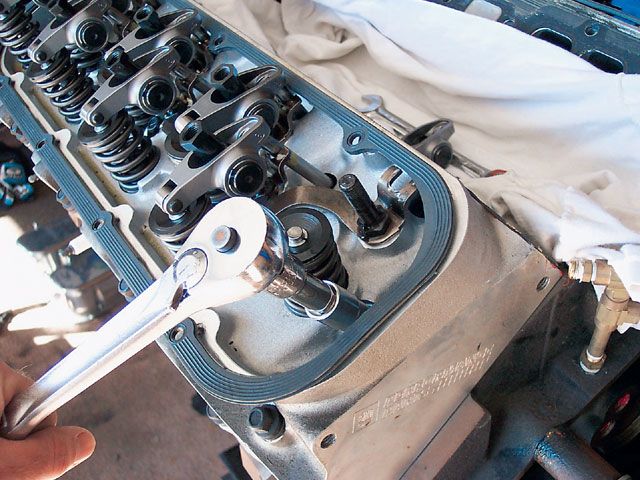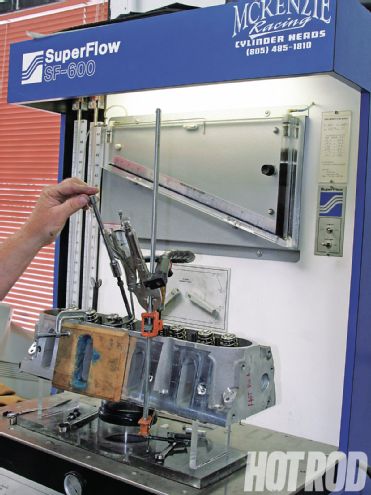
At peak power, a full-race engine consumes about 1.67 cubic feet of air per minute (cfm) for each horsepower it develops. Air Flow Research developed a formula that predicts a normally aspirated, four-stroke, gasoline engine’s power potential based on intake-system airflow. If the heads are flowed at 28 inches of water, the formula is:
HP = 0.25714 × CFM × No. of Cylinders
This indicates that on a V8, the airflow/power-correlation would be:
Flow(cfm @ 28 in) PowerPotential (hp) 100 205.7 150 308.6 200 411.4 250 514.3 300 617.1 350 720.0 400 822.8 450 925.7 500 1,028.6
Actually reaching the predicted power level requires maximum compression, the right cam, a tuned exhaust system, and a nonrestrictive carb and intake manifold. The combined lift generated by the cam lobe and rocker arm should equal the observed lift on the flow bench needed to achieve the desired intake port flow. You don’t want a doggy exhaust port, either. Depending on the engine, if the intake/exhaust-port flow ratio is 65 percent or less, the engine may not meet your power goals, although it can be crutched in some cases with a dual-pattern cam.
 The photo depicts a cylinder head being tested for its intake-port flow potential using a Superflow flow bench. Readings here are expressed as airflow in cubic feet per minute (cfm) at a pressure drop of 28 inches of water.
The photo depicts a cylinder head being tested for its intake-port flow potential using a Superflow flow bench. Readings here are expressed as airflow in cubic feet per minute (cfm) at a pressure drop of 28 inches of water.
Assuming correct parts selection and careful assembly, we have found this formula quite accurate in predicting an engine’s real-world power potential. However, Westech Performance’s Steve Brulé points out that it does not account for engine efficiency (combustion chamber and piston-dome design), which isn’t measured on a flow bench. And Kevin McClelland at K&N adds, “Two engines can both make 600 hp—but one accelerates, the other won’t, either on the dyno or in a car. There may be a disconnect between cylinder-head flow and port volume. Generally, at a given horsepower level, you want to see max airflow out of the smallest port possible.”